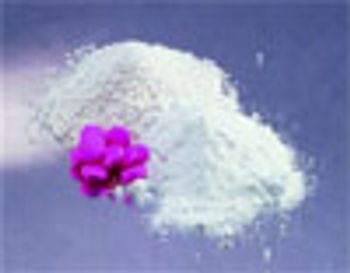
Pharmaceutical Science & Technology News

Pharmaceutical Science & Technology News

FDA's latest proposal focuses on electronic health systems for filing drug labeling information and facility and product data.

Although the United States Pharmacopeia-National Formulary is an everyday reference book, the people and processes behind it are not so familiar.

Most, if not all, pharmaceutical companies today are moving towards a paperless reporting structure. This article examines FDA's 21 CFR Part 11 regulations, which relate to technical and procedural compliance for electronic records and signatures.

Resolving the asset headache - the author explains how effective asset management can enable pharmaceutical companies to boost operational profit, increase production uptime and adhere to regulatory standards.

If an inspection reveals any shortcomings ... a manufacturer may be warned, fined, or its facility closed down until full control can be demonstrated to the satisfaction of the authorities ....

Pharmaceutical Science & Technology News

As FDA prepares for the Critical Path initiative, offices across the agency are expanding the use of the risk-based approach to regulation and applying a quality systems approach to internal operations.

Decisions to accelerate the approval of AIDS combination drugs, reject the over-the-counter status for the morning-after pill, and limit support for stem cell research are hot political topics.

Pharmaceutical Science & Technology News

The American society of Mechanical Engineers's Council on Codes and Standards has formed 10 subcommittees to update and broaden the scope of the BPE standards.

Congress is proposing legislation to legalize drug importing and holding hearings about emerging options.

A recent USP gathering generated creative suggestions for the March 2005 USP convocation.

The FDA guidelines that stipulate the conditions for starting materials are currently being superseded. PhRMA and several European pharmaceutical manufacturers have already added their voices to the ongoing discussion and, as this editorial explains, the debate is far from over. Rules are important, but industry is looking to a future when health care authorities are less inclined to impart total control over every aspect of production.

New technologies, along with changes in FDA oversight, may provide a critical path to make more new drugs available more quickly to patients.

Drug makers and their suppliers will need good planning and organization to meet the new bar coding requirements for drug products used in hospitals.

From data acquisition to enterprise resource planning, software systems operating at all levels of pharmaceutical manufacturing prepare for the seemingly inevitable implementation of process anlytical technology.

Pharmaceutical Science & Technology News

Total organic carbon (TOC) analysis is a fast and effective analytical technique for cleaning validation. Understanding the various types of TOC technologies is essential for choosing the best solution.

FDA expects a firm that is subject to GxP to develop a risk evaluation of its product and to then mitigate the identified risks. Identified risks may be addressed by technical fixes that effectively eliminate the risks or reduce the likelihood of occurrence and/or severity of consequences to acceptable levels.

What Medawar is calling for is "an overhaul of the secretive and profoundly inadequate system of medicines control," and hopes the unfolding crisis of dependency on antidepressants will prove to be a watershed.

FDA's draft guidance on aseptic processing contains some inherent difficulties, including unrealistic expectations of sterility and microbial quantification, an absence of harmonization with international rules, and failure to support new technologies or a risk-based approach. The authors propose a science-based alternative.

pharmaceutical science and technology news

Perils are perceived as pressing ever more intensely on the health of the evolving Europe. The reports of Europe's death may, however, be somewhat exaggerated.

FDA relies on e-chips to thwart bogus products, and drops paper pedigrees and unit-of-use packaging.